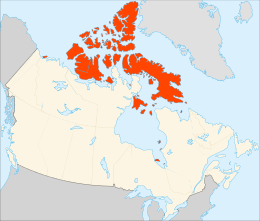
Do you own a pair of jeans? Or two?? Most of the western world believes denim jeans to be a wardrobe staple; a fundamental item; a necessity. Denim jeans have often been quoted as the single most popular item of clothing in the world. A report from the UK states that the average woman owns 7 pairs of jean, while the average man has 6 pairs to his name; and a report out of the US claim the average American owns 7 pairs. With a whopping 1.25 billion pairs sold globally, every year – 450 million in the United States. A survey from a few years back revealed that nearly 61% of Americans say they wear jeans or denim shorts at least 3 times per week. What’s all that worth? The market value for denim fabric was $21.8 billion in 2020, with the expectation of retail sales value for denim jeans (in the US alone) to hit $71.6 billion by 2027. In 2020 – you know, that year most of the world basically stayed at home – Levi Strauss reported close to $4.5 billion in sales.
You might be wondering why we’re chatting about this? Are there environmental grounds for not owning denim jeans (especially SEVEN pairs!)? You bet. But are there ways to overcome this, should you be a denim aficionado? Yes – you can breath a sigh of relief.
If you are one of the aforementioned aficionados, you likely own raw denim clothing – that is, fabric which is not shrunk, washed, distressed or in any other way cosmetically tampered with prior to being sold to you. If you buy from any department store or high street label, all those pre-wearing techniques will have been applied. The difference, so I’m told, is in the fit and fade: raw denim can be molded to your form and faded in very unique ways. But two things both types of denim fabric have in common is that they are dyed with indigo or black dye; and they shed fibers. Lots and lots of fibers.

It has long been known that machine washing clothing causes microfibers to come loose. Particularly from clothing made of polyesters and other synthetic fibers. And despite the washing water going through many stages of water treatment and filtration, those fibers can still end up in our oceans. Every time you wash one polyester fleece it can shed thousands of microfibers, which then travel through a treatment plant – but evade the filtration system so end up in rivers, lakes and oceans. It was once thought that organic fibers, like cotton, would not shed as much and even if they did, they would not accumulate in the environment as they’d dissolve and disappear over time. Sadly, this has been recently disproven.
A study by the University of Toronto has found microfibers of indigo denim in sediments from the Canadian Arctic Archipelago, the Laurentian Great Lakes and the shallow suburban lakes of southern Ontario. For perspective, the Canadian Arctic Archipelago is made of 94 major islands and thousands of minor ones – the vast majority of all of them are uninhabited. This study then, is another demonstration of the reach of human pollution.

The researchers found that in the sediments of those regions, microfibers made up 87-90% of all the anthropogenic particles. In the Archipelago, that was an average of 1,930 microfibers per kilogram of dry sediment. Of that, 21-51% were anthropogenically modified cellulose, and 40-57% of those were indigo denim. Breaking that down, 12-23% of the total microfiber load came from denim items. In just these three geographies, that’s a lot of denim! Which is hardly surprising, given that one single pair of jeans could shed 56,000 ± 4,100 microfibers per wash. So how often do you wash your jeans? For the average person (not wearing the raw denim variety), it’s every 2 wears. An important side note is that although denim was once dyed with natural indigo, this is no longer the case, and synthetic denim is used (read: chemicals). This is certainly another barb in this sting of denim microfiber distribution.
Wastewater treatment plants (WWTP) are trying to effectively capture microfibers. [Side note: more than 80% of the world’s wastewater is released into the environment without any treatment at all.] When WWTP do catch the microfibers, they turn it into a ball of biosolids. Sometimes this is used as land fertilizer. Which means the microfibers are given another chance to run free in waterways, in agricultural runoff. But if the WWTP have less effective filters, the result could be mindboggling: the researchers from the University of Toronto found that from 2 WWTP who pump their treated water into Lake Ontario, up to one billion indigo denim microfibers could be released – per day – into the Lake.

So although, the group were unable to determine for sure whether the transportation of particles to the area was from oceanic or atmospheric movement (and either way, it’s worrying!), the clues from WWTP and jeans ownership and instances of (over)washing seem to point to water.
So what can you do to help ensure that your denim isn’t damaging the planet:
1. Own less of this fabric. It’s kind of startling to think that the average woman owns 7 pairs.
2. Wash them less. Which will help infinitely with point 1. And wash with shorter cycles and on cold water (energy efficient too!).
3. Ensure that you’re cleaning your washing machine lint trap regularly (some newer machines don’t have these).
4. Use a liquid detergent rather than powder (or better yet, soap nuts – natural, not abrasive and fully biodegradable!).
5. Use a wash bag, like the GuppyFriend, or a tool like the Cora Ball. Both will trap microfibers, allowing you to remove them by hand and place them in the trash. A study by the University of Plymouth found that the GuppyFriend reduced microfibers by 54% and the Cora Ball by about 31%.
6. As a longer term investment, consider an external washing machine filter – more expensive and trickier to install than throwing a ball into the drum, but definitely more effective (up to 78% for one brand studied by the University of Plymouth).
7. Use a front loader washing machine when you can.
8. Fill the washing machine up – meaning less agitation and friction.
9. And please don’t do an “ocean wash” of your jeans – which has been largely outed as a gimmick now anyway.




Shorter fibers are cheaper. So many clothes are now made with short fibers…scarves, sweaters, not just jeans. They get everywhere. I saw clothing store employees who unpack clothes have had so many fibers in their lungs they’re going off on disability.
You’re right – it’s so often a case of making clothing as cheaply as possible – both from manufacture and customer perspectives. That’s truly awful about the clothing store employees getting fibers in their lungs! I hadn’t heard that. Fashion is a good example of where daily, sometimes seemingly small decisions, really do make a difference!